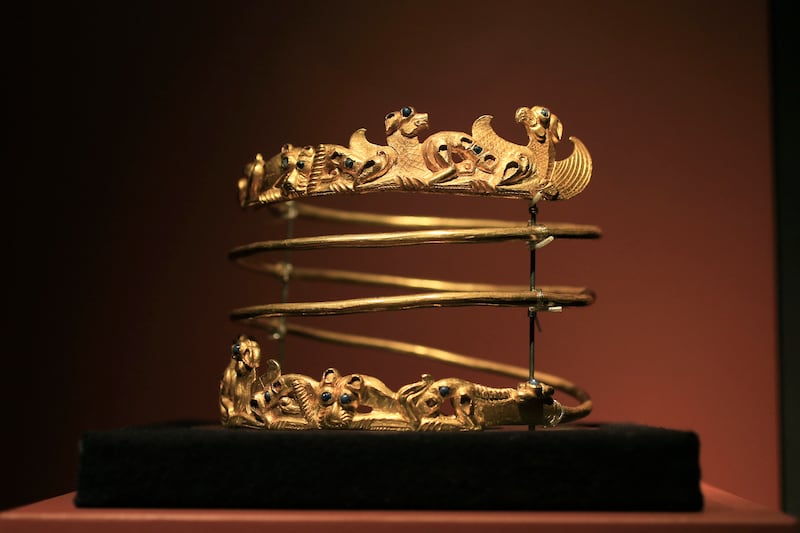Ukrainian president Volodymyr Zelenskiy has welcomed a decision by the Dutch supreme court to order the return of a treasure trove of more than 500 artefacts to the state of Ukraine, rather than to four museums in Russian-occupied Crimea which laid legal claim to them.
The battle over the collection – which was on loan to an Amsterdam museum when the Crimean peninsula was annexed from Ukraine by Russia in 2014 – has been going on since then, with lower courts ruling in 2016 and 2021 that the treasures belonged to the Ukrainian state.
Those rulings have now definitively been confirmed by the supreme court, and the Allard Pierson Museum, which is attached to Amsterdam University, said on Monday that it would act in accordance with the judgment and return the works once it was safe to do so.
The contents of the exhibition, entitled Crimea: Gold and Secrets from the Black Sea, were discovered by archaeologists in tombs in Crimea. They date to between the seventh century BC and the seventh century AD and illustrate the influence of various ancient cultures along the borders of the Black Sea.
Eric Adams, the New York mayor at the heart of Donald Trump’s attempt to reshape US justice department
Thanks to Trump, Saudi Arabia gets a big week in international diplomacy
Trump has flown US into turbulence and Americans aren’t sure where they’re going to land
Polls indicate German federal election will return Merkel-style coalition

They include examples of Scythian gold jewellery, the most spectacular of which are a spiral torque or neck ring from the second century and a necklace from the fourth century BC. There are also Greek and Roman artefacts, including a solid gold ceremonial helmet, and scores of precious gems.
[ Ukraine says it would dismantle 12-mile Russian bridge if it retakes CrimeaOpens in new window ]
The UN and the EU both recognise the territorial integrity of Ukraine as vested in its pre-2014 borders.
Mr Zelenskiy hailed the court’s decision in a tweet as a laudable example of Dutch “leadership in the protection of international law”.
In a separate tweet, he also thanked Dutch prime minister Mark Rutte personally for the planned return of the “Scythian gold” – Scythia or Scythica having been the Graeco-Roman name for the ancient territory along the Black Sea coast.
The Crimean museums that originally lent the works for the exhibition challenged both Dutch court rulings – but, as the supreme court itself observed in its judgment, “this decision ends this dispute”.
The four museums argued that the terms of their loan agreements had been violated – and that artefacts recovered from Crimean soil ultimately belonged there, regardless of more recent politics.
The Ukrainian government successfully petitioned to join the court proceedings in November 2015. It argued that the artefacts were part of its national heritage, and that as such it was imperative to keep them safe during the conflict with Russia.
[ Ukraine accuses Russia of destroying another damOpens in new window ]
On that basis, the Ukrainian culture ministry made an order that the collection should be held at the National Historical Museum in Kyiv “until the situation in Crimea has stabilised”.
Following the judgment, the Crimean museums are expected to face a bill of more than €500,000 for costs and storage.
During the long-running case – which Dr Wim Hupperetz, then director of the Amsterdam museum, described as “a nightmare for all concerned” – Russia had threatened to end all future loans to Dutch museums if the exhibits were not returned to Crimea.
Whether or not it will now be regarded as secure enough to transfer the priceless trove to Kyiv in the context of a full-scale war must be in some doubt given that the long-awaited new Ukrainian offensive has just begun.














